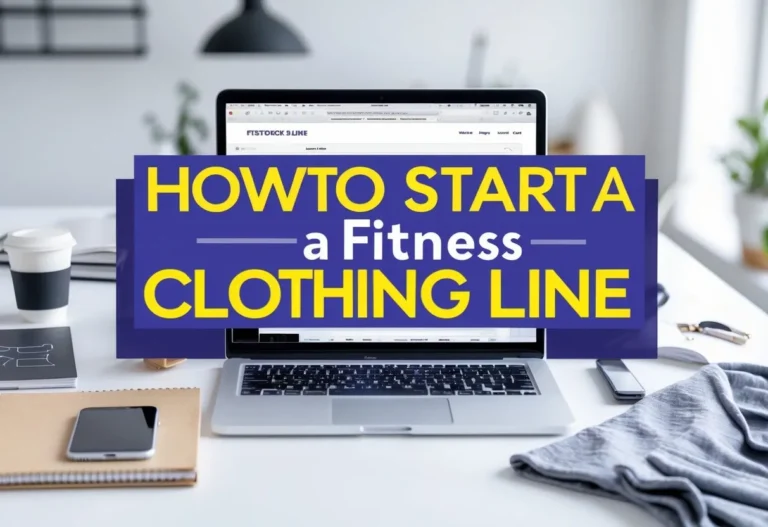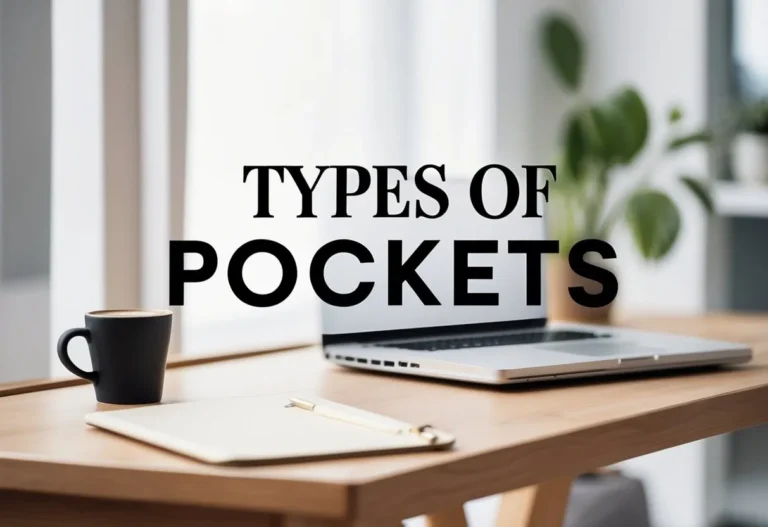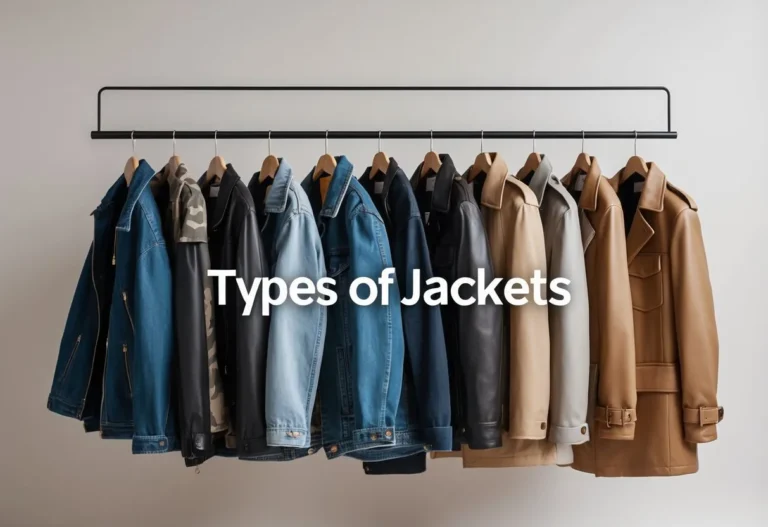Clothing Marketing Strategies for Fashion Brands: Guide
Clothing brands face a tough challenge in standing out in today’s crowded fashion market. To succeed, brands must use smart marketing strategies that clearly connect with their audience and show what makes them different. Effective clothing marketing strategies focus on creating a strong brand identity, engaging customers through digital platforms, and leveraging collaborations and promotions to build lasting relationships.

A brand that knows its audience and shares a clear story can boost its presence and attract loyal customers. Using social media and influencer partnerships helps brands reach more people and build trust quickly. At the same time, offering unique experiences and responsible practices can set a fashion brand apart and keep it relevant over time.
Key Takeaways
- Successful marketing starts with a clear brand message that resonates with the right customers.
- Digital tools and influencer partnerships help expand brand reach and engagement.
- Building trust with responsible practices and customer experiences creates lasting loyalty.
Defining Your Target Audience

Understanding who the customers are is critical for a fashion brand’s success. Identifying specific groups helps tailor products and marketing strategies to meet their needs. This process involves collecting detailed data, creating clear customer profiles, and finding specialized market segments.
Market Research Techniques
Market research gathers information about potential and current customers. It uses surveys, interviews, and focus groups to learn what consumers want and how they behave. Analyzing competitors and reviewing sales data also helps uncover trends and gaps in the market.
Online tools like social media analytics and Google Trends can show what styles and products are popular. This data reveals customer preferences by age, location, and shopping habits. Accurate market research reduces risk by ensuring the brand develops clothing that appeals directly to its customers.
Creating Buyer Personas
Buyer personas are detailed descriptions of ideal customers based on real data. They include demographics such as age, gender, and income, plus lifestyle choices and buying motivations. These personas show how customers think and what influences their fashion decisions.
For a clothing business, well-defined personas guide product design and marketing messages. For example, a young urban professional will need different fashion items and communication compared to a middle-aged outdoor enthusiast. Personas make marketing more targeted, helping brands connect with customers on a personal level.
Niche Identification for Clothing Marketing Strategies
Niche identification focuses on finding a specific segment of the market that a fashion brand can serve best. Instead of targeting everyone, the brand narrows its audience to groups with distinct needs or tastes, such as eco-conscious shoppers or luxury streetwear fans.
This approach helps position the brand clearly in a crowded industry. It reduces competition by appealing to customers who feel overlooked by broader brands. Identifying a niche also supports stronger branding and loyalty because it addresses unique customer values and preferences.
Building a Distinctive Brand Identity

Creating a unique brand identity is key for a fashion brand to attract and keep customers. It involves defining what the brand stands for, designing visual elements that match its message, and using colors and logos that make it easy to recognize. These steps help separate the brand from others and build customer loyalty.
Crafting Brand Values and Story for Clothing Marketing Strategies
A fashion brand’s values represent what it believes in and supports. These values guide all actions and decisions, showing customers what the brand truly stands for. Clear, authentic values create trust and emotional connections with shoppers.
The brand story tells the origin, mission, and vision of the clothing brand. It explains why the brand exists and what it wants to achieve. Sharing this story helps consumers relate on a personal level and builds loyalty. The story should be simple, honest, and reflect the brand’s core values consistently.
Developing a Memorable Visual Identity
Visual identity includes all the design elements that represent a clothing brand. This can be logos, typography, packaging, and imagery. All these parts need to work together to show the brand’s personality clearly.
Consistency is critical. When the visual style is uniform across websites, social media, and products, customers recognize the brand quickly. Engaging visuals also evoke emotions that connect customers to the brand, encouraging repeat purchases and long-term loyalty.
Color Palette and Logo Selection
The color palette used by a fashion brand influences how customers feel about the brand. Colors should match the brand’s personality—bold colors might suggest energy and youth, while softer hues can feel elegant and calm.
A logo is the most visible aspect of branding and acts as a symbol of the brand’s identity. It needs to be simple, memorable, and scalable for different uses. Choosing the right logo and colors helps the brand stand out in a crowded market and reinforces customer recognition every time they see it.
Boosting Brand Awareness and Social Media Presence

Fashion brands can increase their visibility and connect with their audience by using targeted social media tactics. Choosing the right platforms, creating engaging content, and partnering with trusted voices are key to building recognition and loyalty.
Leveraging Instagram and Top Platforms
Instagram remains the leading platform for fashion marketing due to its visual focus and shopping features. Brands should use shoppable posts to let followers buy products directly from images or videos. Stories and Reels provide quick, engaging ways to showcase behind-the-scenes content and new collections.
Other platforms like TikTok attract a younger audience with viral challenges and short videos. Pinterest helps drive traffic through mood boards and shoppable pins. Facebook is effective for community building and targeted ads.
Brands must pick platforms that best match their target audience and tailor content accordingly. Using analytics to track engagement helps refine these efforts and boost brand awareness.
Content Strategies for Social Media
Successful fashion marketing relies on high-quality visuals that reflect brand identity. This includes professional photos, videos, and interactive elements like polls or AR filters.
User-generated content (UGC) is a powerful tool. Encouraging customers to share photos with branded hashtags adds authenticity and builds community. Contests and style challenges increase participation and create organic reach.
Content should balance promotional posts with storytelling that highlights values or lifestyle. Consistency in posting schedules and tone encourages follower trust and engagement.
Engaging Fashion Bloggers and Brand Ambassadors
Working with fashion bloggers and brand ambassadors provides credibility and expands reach. Influencers with audiences aligned to a brand offer authentic recommendations that resonate more than traditional ads.
Brands should partner with influencers who embody their style and values. Micro-influencers often have higher engagement rates and loyal followers.
Ambassadors can create exclusive content, host live shopping events, or promote new product drops. Offering unique discount codes or early access enhances their appeal and drives conversions.
Authentic collaborations build long-term relationships and foster brand loyalty.
Influencer and Collaboration Marketing

Effective use of influencers and strategic partnerships helps fashion brands reach targeted audiences and build trust. Focused tactics for engaging different influencer types, forming strong partnerships, and collaborating with other brands can maximize visibility and customer loyalty.
Influencer Marketing Tactics
Fashion brands benefit from working with influencers at various levels, especially micro-influencers. These smaller creators typically have more engaged, niche audiences, which leads to higher trust and conversion rates.
Short videos on platforms like TikTok and Instagram Reels create quick, engaging content that captures attention efficiently. This bite-sized format works well for showcasing outfits and styling tips. Brands should balance quality with the need for concise, relatable videos.
Brands can also encourage customer-created content to build authenticity. User posts serve as social proof, making promotional efforts feel more genuine and relatable. Using AI tools helps identify the right influencers and track campaign performance, saving time and improving results.
Forming Influencer Partnerships
Long-term collaborations with influencers strengthen brand consistency and loyalty. Instead of one-time posts, ongoing relationships enable deeper storytelling about brand values and products. This continuity builds trust among followers and turns influencers into brand ambassadors.
Choosing partners who share the brand’s ethics, such as sustainability or inclusivity, enhances credibility. Authenticity is key, so partnerships must feel natural to the influencer’s audience.
Performance-based incentives, like referral commissions, motivate influencers to promote actively. Clear goals and transparent communication help maintain productive partnerships and sustainable growth.
Brand Collaborations for Reach Expansion
Partnering with other complementary fashion brands or creators broadens audience reach. Co-branded collections and joint campaigns combine resources and fan bases, increasing exposure and consumer interest.
Collaborations should align in style and values for a consistent message. Combining marketing budgets in shared campaigns can amplify social media impact and sales.
Brands can leverage diverse influencer networks by pooling talent across collaborations. This approach builds a wider, more engaged customer community while sharing costs and creative ideas.
Digital Marketing Strategies for Fashion Brands

Effective digital marketing for fashion brands focuses on reaching the right audience through targeted online channels and measuring the impact to improve results. It combines paid promotions, search optimization, data analysis, and direct communication to build brand awareness and boost sales.
E-commerce and Paid Ads
Paid ads are a key tool for driving traffic to fashion e-commerce sites. Brands use platforms like Facebook, Instagram, and Google Ads to target specific demographics interested in fashion styles, trends, and products.
Using precise audience targeting—based on age, location, interests, and shopping behavior—helps optimize ad spend and increase conversions. Dynamic ads can showcase products recently viewed by visitors to encourage purchases.
Effective ads include clear calls-to-action (CTAs), high-quality images or videos, and promotions like discounts or limited-time offers. Retargeting campaigns remind potential customers about items left in shopping carts, lifting sales without requiring cold audience outreach.
Search Engine Optimization (SEO)
SEO helps fashion brands improve visibility in organic search results to attract shoppers actively seeking products. Optimizing product descriptions, blog content, and metadata ensures websites rank higher for relevant queries.
Using keywords like “summer dresses,” “men’s outerwear,” or “sustainable fashion” tailored to brand offerings attracts qualified traffic. Structured data and schema markup enhance search result features, improving click-through rates.
Fashion brands benefit from maintaining a blog with style guides, trend updates, and sustainability stories to engage customers and improve SEO. Social media pages and backlinks from fashion influencers further boost a site’s authority and ranking.
Analytics Tools for Performance Tracking
Analytics tools provide insights into customer behavior, campaign effectiveness, and website performance. Platforms like Google Analytics, Facebook Insights, and Shopify reports track visitor sources, engagement, and conversion rates.
Brands use these tools to measure sales, bounce rates, and customer journeys. This data identifies top-performing products, successful ad campaigns, and areas needing improvement.
Tracking return on ad spend (ROAS) and customer lifetime value (CLV) helps optimize marketing budgets. Regular review of analytics supports data-driven decisions, ensuring marketing efforts align with consumer preferences and generate growth.
Email Marketing Campaigns
Email marketing remains one of the most cost-effective ways to engage customers. Fashion brands build segmented email lists to send personalized content, product recommendations, and exclusive offers.
Campaigns often include newsletters with styling tips, early access to sales, and birthday discounts. Automated workflows send welcome emails, cart abandonment reminders, and re-engagement messages to maintain customer interest.
Maintaining clean and permission-based email lists improves deliverability and reduces unsubscribe rates. Clear CTAs and visually appealing designs encourage click-throughs, driving traffic back to e-commerce sites and boosting repeat purchases.
Promotions, Loyalty Programs, and Events

Successful clothing marketing depends on well-planned promotions, loyalty incentives, and engaging events. These tactics help brands keep customers interested, encourage repeat purchases, and build a stronger connection with the audience. Each approach plays a distinct role in increasing sales and strengthening brand presence.
Effective Promotions and Discounts for Clothing Marketing Strategies
Promotions such as discounts, promo codes, and flash sales are direct ways to boost short-term sales and attract new shoppers. Limited-time offers create urgency and encourage customers to act quickly. Brands should carefully time these promotions around key shopping periods like holidays or product launches.
Using promo codes allows for targeted marketing, such as offering discounts to email subscribers or social media followers. Flash sales, while brief, grab attention and can clear inventory quickly. Clear communication about terms and expiration ensures customers understand the value.
Loyalty Programs for Repeat Customers for Clothing Marketing Strategies
Loyalty programs reward customers for continued purchases, increasing customer loyalty and lifetime value. Points systems are common, allowing shoppers to earn rewards on every purchase, which they can redeem for discounts or exclusive perks.
Personalization is key. Programs that offer birthday discounts, early access to sales, or exclusive event invites build a deeper brand connection. Digital loyalty cards and apps make it easy to track rewards and engage users across online and offline platforms.
Running Pop-Up Shops for Clothing Marketing Strategies
Pop-up shops and fashion shows create immersive brand experiences that drive awareness and excitement. Pop-ups bring the brand directly to target markets while testing new locations with low risk. They offer personal interactions and unique product displays.
Fashion shows, including runway presentations, showcase new collections and highlight brand identity. These events can attract media, influencers, and loyal customers, generating buzz. Exclusive access or VIP invites strengthen the sense of belonging among top customers and can boost brand loyalty.
Sustainability and Brand Responsibility

Fashion brands today focus on reducing their environmental footprint and showing clear responsibility. This involves using eco-friendly materials, being honest about their impact, and aligning their messaging with ethical values that matter to consumers.
Implementing Eco-Friendly Practices for Clothing Marketing Strategies
Many brands now use renewable or recycled materials to lower waste. For example, sourcing organic cotton or recycled polyester reduces water use and pollution. Some adopt regenerative farming to improve soil health, which benefits the planet long-term.
Brands like Everlane prioritize transparent supply chains with factories that meet environmental standards. They also cut down on single-use plastics by choosing biodegradable packaging. These actions show how brands can change their production to help the environment directly.
Commitment to such practices often includes rethinking energy use in stores and offices by switching to renewables and reducing carbon footprints through better logistics.
Communicating Environmental Responsibility
Successful brands share both their wins and challenges openly. They publish detailed sustainability reports, showing progress on goals like carbon reduction or waste management.
Honest communication builds trust. Brands can highlight certified eco-labels or milestones in environmental programs to prove accountability. When they discuss efforts like France’s anti-waste laws, it shows they follow regulations closely.
Using clear messaging on websites and social media helps consumers understand what sustainable efforts mean in real terms. Visual content such as videos or infographics makes complex information easier to grasp.
Showcasing Ethical Brand Values for Clothing Marketing Strategies
Ethical values go beyond materials—they include fair labor practices and community support. Brands that prize human rights ensure workers receive fair wages and safe conditions.
Many brands run campaigns educating customers about responsible fashion. Workshops or collaborations with environmental groups help show a brand’s real commitment.
Everlane’s emphasis on “radical transparency” involves sharing pricing breakdowns and factory stories. This honesty aligns with consumers who want to buy from brands that share their social values.
Clear brand values paired with consistent actions build loyalty and attract eco-conscious shoppers seeking authenticity.
Optimizing Product Content and Customer Engagement

Creating clear and attractive product content is vital for boosting sales and building brand awareness. Engaging customers with meaningful interaction helps fashion brands stand out and fosters loyalty.
Writing Compelling Product Descriptions
Product descriptions should focus on key features, benefits, and style details. They need to be clear and easy to read, helping customers understand how the item fits their needs.
Using simple language to explain fabric, fit, and care instructions builds trust. Highlighting unique design elements or sustainable materials adds value. For example, mentioning “made from organic cotton for enhanced comfort” appeals to eco-conscious buyers.
Descriptions that answer common questions reduce hesitation. Short, bullet-point lists can clarify important details like sizes or washing instructions. Good product descriptions support a smooth buying decision and improve search engine visibility.
Using Customer Reviews Effectively
Customer reviews act as social proof and encourage new buyers to trust the brand. Brands should showcase authentic feedback prominently on product pages.
Highlighting both positive and balanced reviews adds credibility. Reviews with user photos increase engagement and provide real-world examples of the product in use.
Responding to questions or negative reviews shows that the brand cares about customers. This interaction helps develop a loyal community. Featuring reviews in email marketing or blog posts can extend their reach and improve overall brand awareness.
Driving Engagement through Storytelling
Storytelling creates an emotional connection between customers and the brand. Sharing the inspiration behind collections or the artisan process gives products deeper meaning.
Stories can be told through blog posts, videos, or social media content. For example, explaining how a dress was designed with sustainability in mind helps align with customer values.
Incorporating customer stories or user-generated content strengthens community involvement. Interactive campaigns or live streams where designers share stories invite customers to participate actively. This approach boosts engagement and sets the brand apart in a crowded market.
Frequently Asked Questions
Marketing strategies for fashion brands often focus on targeted online efforts, partnerships, and clear positioning. Success depends on choosing the right platforms, engaging audiences, and creating unique brand value.
How can social media be leveraged to promote a new fashion brand?
Social media platforms allow fashion brands to showcase products visually and tell engaging stories. Brands can use targeted ads, influencer collaborations, and interactive content to build awareness.
Regular posting and responding to customer comments help brands form a loyal community. Platforms like Instagram, TikTok, and Pinterest work well for showing fashion styles.
What are effective digital marketing tactics for small to mid-size clothing companies?
Small to mid-size brands benefit from email marketing that sends personalized offers. Using SEO to improve search rankings helps attract organic traffic.
Content marketing, such as blogs or videos about style tips, can build trust. Paid social media ads with clear calls-to-action drive conversions on a budget.
Which marketing channels are most successful for women’s fashion brands?
Social media channels like Instagram and Facebook are top choices due to their visual nature and large female user base. Influencer partnerships and user-generated content boost authenticity.
Email marketing helps keep customers loyal with exclusive deals. Websites optimized for mobile shopping increase ease of purchase.
How do collaborations with influencers and celebrities affect fashion brand awareness?
Partnering with influencers or celebrities can increase brand visibility quickly. They reach ready audiences and lend credibility to the brand’s image.
These collaborations often generate content that drives engagement and encourages followers to explore the brand. Selecting influencers whose values match the brand is crucial.
What role do the 4 P’s of marketing play in the success of a fashion brand?
Product defines the design and quality that appeal to target customers. Price must reflect perceived value while staying competitive.
Place refers to where products are sold, including physical stores and online platforms. Promotion focuses on the methods to communicate brand messages and attract buyers.
All four elements must align to create a consistent and effective consumer experience.
How can a clothing brand differentiate itself in a crowded market?
A clothing brand can stand out by adopting sustainable materials and transparent production practices. Emphasizing eco-conscious efforts appeals to growing consumer demand for responsible fashion.
Crafting a strong brand story that highlights unique values and aesthetics also helps. Consistent, engaging visual branding and customer interaction build lasting impressions.







